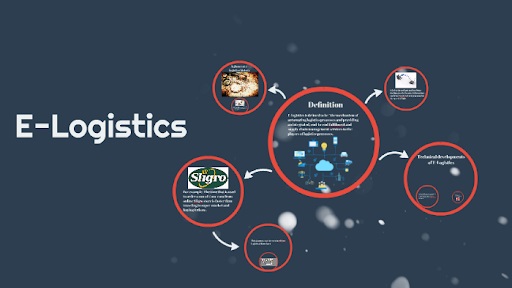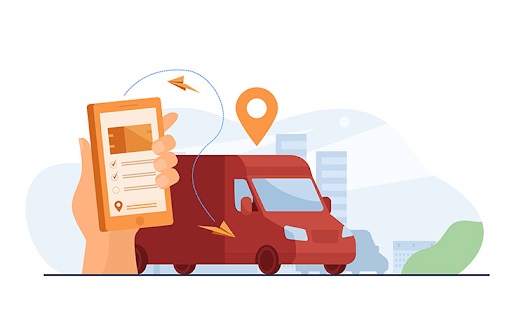
More Helpful Content
In the current digital age, buying and selling goods in cyberspace is not new to us. That opens up a vast business opportunity, and to be successful in this e-commerce field, you must have complete knowledge and optimal strategies. If you are looking for that then this article is for you. In this article, we will tell you what is E-logistics? its difficulties and challenges, and effective business strategies that you should refer to.
You can understand what is e-logistics as the management of physical flows (goods) of an organization when they sell items on a digital website (e-commerce site, website, etc.). This requires setting up certain processes to optimize specific thread management.
👉 Read More: What is a 3PL & Why a 3PL Might Be Just What Your Business Needs?
👉 Read More: Advanced Shipping Notice (ASN): Definition, Example and Benefits

Electronic logistics, although linked with conventional logistics, still has distinctive characteristics. This activity requires an e-commerce shipping service.
Several reasons contribute to this:
Understanding the types of systems that exist in e-logistics is crucial to fully grasp what is e-logistics and how it optimizes the supply chain, enhances efficiency, and improves customer satisfaction.
B2B (Business-to-Business) e-logistics systems are designed to facilitate efficient and cost-effective logistics operations between businesses. Here are some key aspects:
B2C (Business-to-Consumer) manages the logistics involved in delivering products directly to individual consumers. Here's a deeper dive into these systems:
C2C e-logistics systems facilitate logistics operations between individual consumers, often through online platforms or marketplaces where individuals buy and sell directly to each other. Here’s how it works:
B2E e-logistics systems focus on managing logistics and supply chain operations that directly benefit employees within an organization. Here’s a deeper exploration of these systems:
Traditional logistics involves the old-school methods of managing goods, relying on manual processes and paperwork for tasks like transportation and warehousing. In contrast, e-logistics (electronic logistics) leverages digital tools such as electronic data interchange (EDI) and real-time tracking systems. It automates supply chain operations, making them more efficient and transparent.
On the other hand, what is e-logistics? It speeds up order processing, improves inventory management, and enhances stakeholder communication. This shift from traditional to e-logistics creates agile, interconnected supply chains that meet modern commerce needs faster and more precisely.
Traditional logistics and e-logistics have distinct characteristics, driven by the evolution of technology and the changing demands of the marketplace.
| Feature | Traditional Logistics | E-Logistics |
| Processes | Manual, paper-based | Digitized, automated |
| Transactions | Physical paperwork, face-to-face interactions | Digital transactions, online platforms |
| Technology | Basic (spreadsheets, basic ERP) | Advanced (IoT, AI, big data, cloud computing) |
| Global connectivity | Local or regional focus | Global supply chain operations |
| Costs | Higher due to manual processes | Lower due to automation and efficiency |
| Visibility | Limited real-time visibility | Real-time tracking and analytics |
| Control | Limited control over the supply chain | Enhanced control over logistics operations |
| Flexibility | Less flexible in adapting to changes | Agile and adaptable to market demands |
| Integration | Limited technology integration | Seamless integration across systems and platforms |
To fully understand what is e-logistics, you should know the complete process. Fulfilling your sales orders with e-logistics is straightforward. Utilize our proprietary software integrated across our fulfillment network for a seamless experience. Orders are automatically routed to our fulfillment centers, where inventory is efficiently picked, packed, and shipped directly to your customers. Here’s how:
Overview of e-logistics process:
Example of e-logistics process:
Order placement & confirmation:
Order fulfillment & delivery:
According to a report from Fevad, more than 35% of customers with a bad delivery experience will never return to purchase from the same eCommerce site again. Therefore, it is important for e-sellers to be able to ensure perfect delivery service to their end recipients, and many activities can be taken to ensure complete consumer satisfaction.
- Read More: [Best Price] Top 11 E-commerce Logistics Companies
- Read More: Top 30 Popular 3pl Logistics Companies In 2022 By Revenue
- Read More: Advanced Shipping Notice (ASN): Definition, Example and Benefits
Today, when the quality of goods is almost the same, customers increasingly expect faster shipping speeds. Therefore, delivery speed will be something that e-commerce businesses care about. In addition to these standard shipping offers, more and more e-commerce companies are opting for eco-delivery: a survey by Generix found that more than 87% of French customers would be interested in an alternative method. sustainable distribution. Therefore, customizing your supply chain by implementing bicycle or electric vehicle door-to-door delivery can be a great way to set yourself apart from the competition and ensure customer satisfaction.
Besides the speed of delivery, the shipping cost will also be something that customers care about when buying on e-commerce. It is proven by PayPal and ComScore reports that 43% of buyers in France would be willing to refuse a purchase if the shipping price is too high. So in order to boost sales, offering free shipping packages would be an effective strategy. However, you will need to balance profitability and cost structure when using this method, you should offer free shipping programs to customers on their next purchase to build loyalty in the future. a certain amount of time to attract new customers.
With the mentality of wanting to have the assurance of their goods being delivered to them, providing your customers with the ability to track their goods will benefit your business. It both helps create peace of mind for customers and their loyalty to the business. Not only that, the goods tracking system will save your staff time in customer service management.

Profit is considered the lifeblood of e-commerce. Fevad reports that the return rate in regular commerce is around 8%, while it is 25% in e-commerce. Those numbers confirm that profit is the most important issue in this sector. Especially now, when buyers have made more strict and difficult purchasing decisions. Rebound's report shows that 46% of people do not want to buy a product again from a website that causes them to have a bad buying experience.
Continue to learn what is e-logistics, you should be aware of its barriers. Implementing e-logistics can significantly enhance business operations, but there are several challenges that companies might face. Here are the main barriers:
Setting up e-logistics can be expensive. The cost of new technology, software, and training can be high, especially for smaller businesses.
Combining new e-logistics systems with existing ones like ERP or CRM can be complicated and time-consuming. Ensuring everything works together smoothly can be a significant challenge.
Employees may find it hard to learn and use new e-logistics technologies. Adapting to automated processes and new software can be difficult, especially for those used to manual methods.
Protecting customer data and ensuring privacy is crucial. Data breaches or cyberattacks can harm customer trust and lead to serious problems.
Poor digital and physical infrastructure can slow down e-logistics implementation. Unreliable internet connections and outdated technology can make real-time data exchange and logistics operations difficult.
Different regions have different regulations, making compliance complex. Varying data protection laws, customs rules, and trade policies can pose significant challenges.
Even with digital advancements, physical logistics like transportation, warehousing, and last-mile delivery remain challenging. Efficient route planning, timely deliveries, and managing inventory are ongoing hurdles.
Many businesses don't fully understand the benefits and potential return on investment of e-logistics. Without this understanding, there can be resistance to adopting new systems.
Relying heavily on technology can create risks. System downtimes or technical glitches can disrupt the entire supply chain, leading to delays and inefficiencies.
Switching to e-logistics often requires a cultural shift within the company. Employees may resist changes to established workflows and practices, hindering successful implementation.
To overcome these barriers, businesses need careful planning, investment in training and infrastructure, and a culture that embraces innovation and adaptability. By tackling these challenges, companies can fully benefit from e-logistics, improving efficiency, scalability, and customer satisfaction.
Having solved the above problems, the question now is not what is e-logistics but how to increase profits by taking advantage of those problems. Choosing the right e-logistics solution for your needs will answer this question. There are several options for you to consider:
The main benefit of this organizational style is that it allows you flexibility in the day-to-day management of logistics. These activities include order control, inventory control, and packaging. In addition, it also provides you with a reference of shipping providers giving you complete control and easy reproducibility. However, this method will be difficult and time-consuming if your inventory increases.
If you want to completely reduce the burden of inventory management, dropshipping will be a great choice. With this form, a manager or supplier will manage all activities in your business: sourcing raw materials, purchasing goods, packaging products, delivering... This strategy is not highly binding, so this strategy will be more suitable for small businesses. However, this type of logistics will not provide you with complete information about product quality and delivery time.

To offload logistics-related problems, outsourcing logistics professionals to support is chosen by many business owners because of the efficiency it brings in revenue and quality of work. You can benefit from the extensive experience of the experts you hire in the logistics and e-commerce business. However, there are a few things you need to keep in mind when using this tactic such as hiring professionals that match your working style and the future direction of your business.
👉 Read More: 3PL Cost: All Fees And Why You Need To Pay (Update 2023)
EFEX - an end-to-end order fulfillment solution - offers comprehensive e-logistics that optimize the fulfillment process from start to finish. By leveraging advanced technology and extensive expertise, EFEX ensures seamless integration with sales channels, automates order processing, and provides real-time tracking.
With our state-of-the-art warehousing facilities and reliable shipping services, we guarantee efficient storage and distribution, reducing operational costs and improving delivery times.
Some notable features of EFEX:
E-logistics is a great opportunity for businesses today, but also full of challenges and difficulties. Therefore, to be successful in this field, you must clearly understand what is e-logistics? and train yourself to have a good judgment and understanding of market trends. Try to learn, and cultivate knowledge to have reasonable business plans to increase profits and please customers. We hope you have a good time with Efex.


